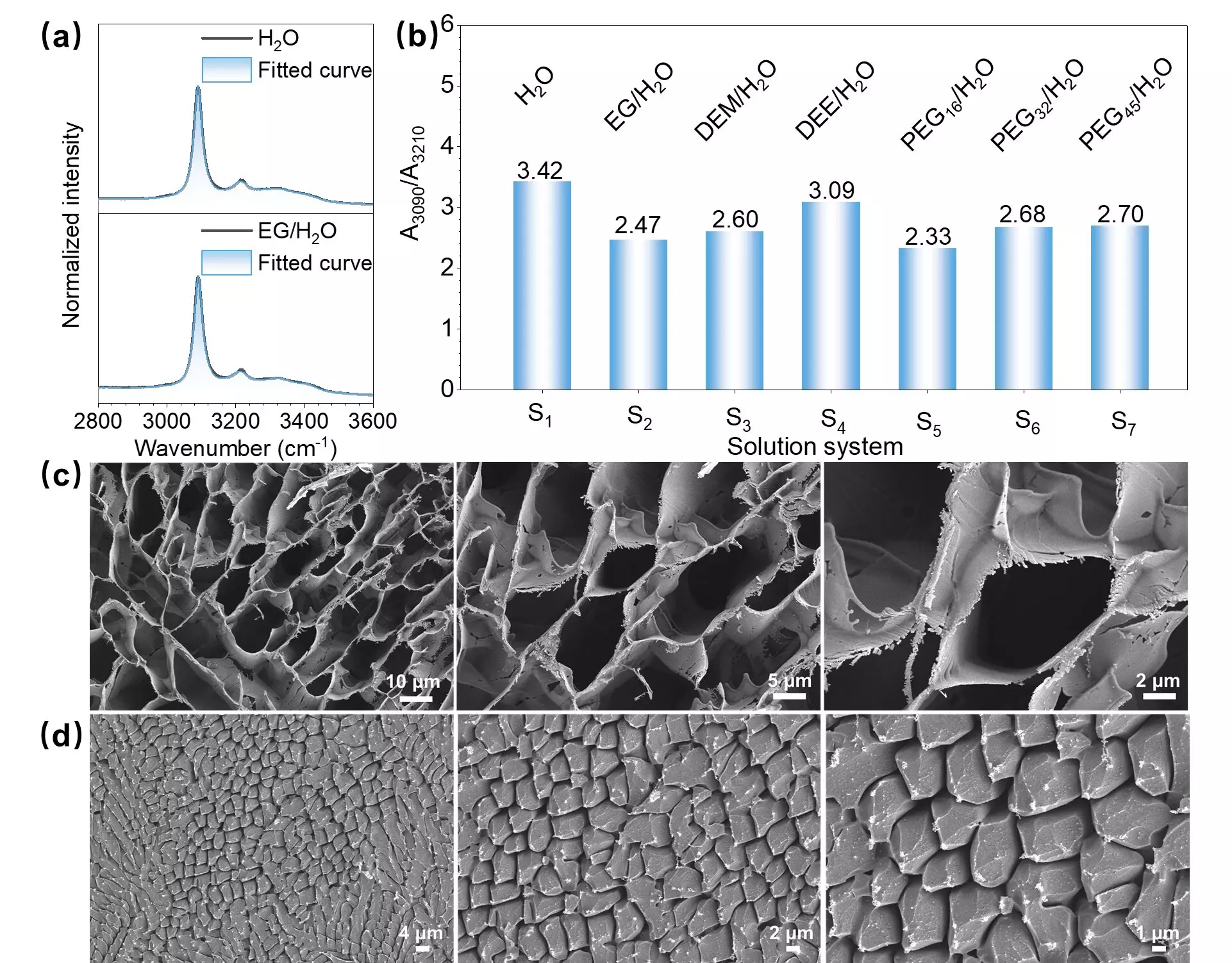The role of ice in the emergence of life has long been a topic of interest in scientific research. It is believed that organic molecules can be concentrated within the gaps of ice crystals, leading to the formation of organic compounds. However, traditional methods of studying organic molecules in ice have been limited to absorption-based spectroscopic techniques. A research team from the University of Science and Technology of China (USTC) has developed a new method using phosphorescence spectroscopy to detect microstructures in water ice.
The team utilized organic phosphorescent probes, such as acridinium iodide (ADI), to study the microstructural changes of water ice. By analyzing the emission spectra of the probes, they were able to determine the hydration state of the molecules, indicating whether the water ice was crystalline or amorphous. The addition of trace amounts of ethylene glycol (EG) led to significant changes in the emission spectra, demonstrating the transformation of ADI molecules in water ice.
The addition of EG resulted in the emergence of fluorescence and phosphorescence bands in the emission spectra. This indicated a shift from undissolved aggregates to dissolved ion states in the water ice. Low-temperature scanning electron microscopy (Cryo-SEM) images confirmed the presence of porous microstructures in the ice after the addition of EG. Additionally, low-temperature Raman spectra showed a shift in the O-H vibration of the water ice, further supporting the conclusion that trace organics can inhibit the crystalline order of ice.
The study’s findings suggest that the addition of small or large molecular organics to water ice can have a significant impact on its microstructure. Phosphorescence spectroscopy offers a more convenient and sensitive method for studying these interactions at lower concentrations and wider temperature ranges. The technique can also reveal morphological differences in water-ice microstructures when trace organics with different structures are introduced, providing valuable insights into the behavior of organic molecules in ice.
Overall, the research conducted by the USTC team sheds light on the complex interactions between organics and water ice microstructures. By using innovative phosphorescence spectroscopy techniques, they have been able to uncover new information about the behavior of organic molecules in ice. This study opens up new possibilities for further research in this field and highlights the importance of considering the impact of organics on the formation and structure of ice in the natural environment.


Leave a Reply